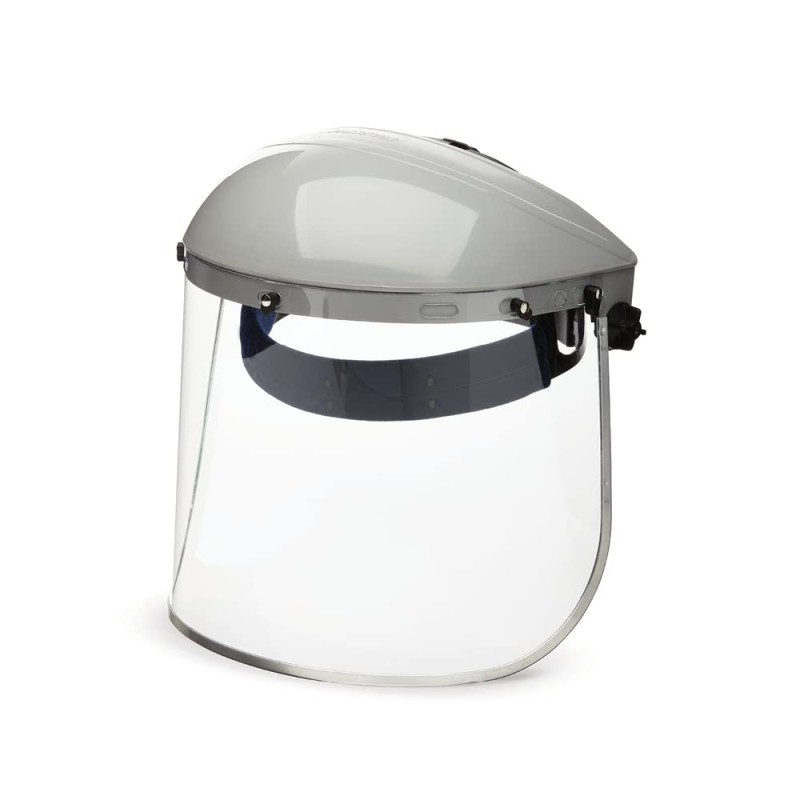Protective face shields are personal protective equipment designed to protect the face, especially the eyes, nose, and mouth, from hazards such as splashes, chemicals, ultraviolet radiation, gases, viruses, and physical impacts. They are widely used in industries such as manufacturing, healthcare, laboratories, construction, and electronics.
1. Product Features
High Protection: Protective face shields effectively prevent splashes, chemical splashes, harmful substances, gases, dust, UV rays, and other risks from affecting the face.
Comfort: These shields are designed with comfort in mind, often featuring adjustable straps, ventilation holes, and soft padding to ensure comfort during long-term wear and reduce pressure on the face.
Visibility: Face shields are typically made with transparent plastic or polycarbonate panels that offer excellent visibility, allowing the wearer to clearly see their surroundings.
Anti-Fog Function: Many face shields are equipped with anti-fog coatings or ventilation designs to keep the shield clear, especially in high-temperature or humid environments.
Durability: Materials offer excellent impact resistance and durability, making the shields suitable for use in harsh environments.
2. Application Scenarios
Industrial Production: Face shields are essential in high-risk work environments such as welding, grinding, painting, chemical operations, mining, and construction, protecting the face from splashes, chemicals, and heat.
Healthcare: In surgical, hospital, and healthcare settings, face shields are important for preventing droplet transmission and protecting against contamination during medical procedures.
Laboratories: Face shields are used in chemical and biological laboratories to protect the face from exposure to chemicals, viruses, or gases.
Daily Protection: In industries like cleaning, gardening, and food processing, face shields are commonly used to protect against dust, oil smoke, and splashes.
3. Maintenance and Care
Regular Cleaning: Clean the transparent panel of the face shield regularly to remove dirt, oil, and debris that may obstruct vision. Use a specialized cleaner and soft cloth to avoid scratching the shield.
Inspect for Damage: Regularly check the face shield for cracks, damage, or wear, especially on the transparent panel and frame, to ensure it continues to provide adequate protection.
Proper Storage: Store the face shield in a cool, dry place away from direct sunlight and high temperatures to prevent the materials from degrading or warping.
Protective face shields are an essential safety tool in both daily life and the workplace. By selecting and using the right face shield, you can effectively reduce the risks associated with face exposure to hazardous environments, improving safety and health protection in various industries and tasks.




